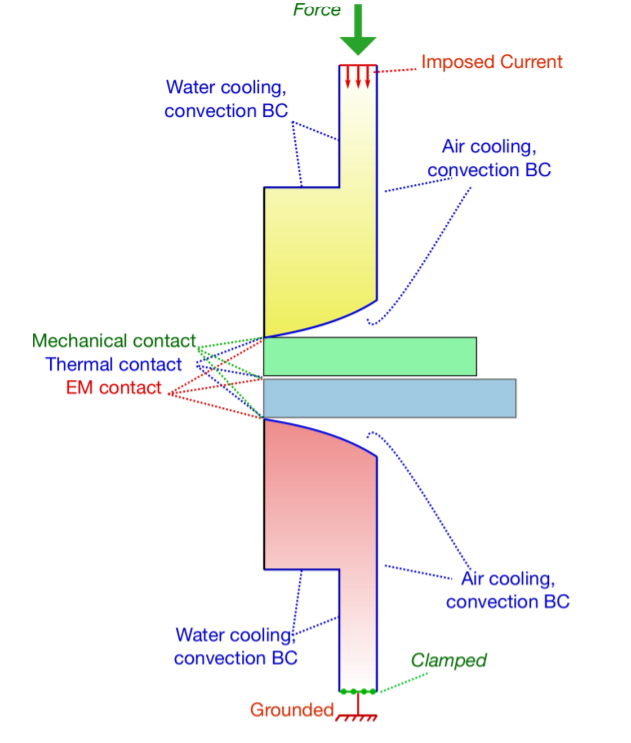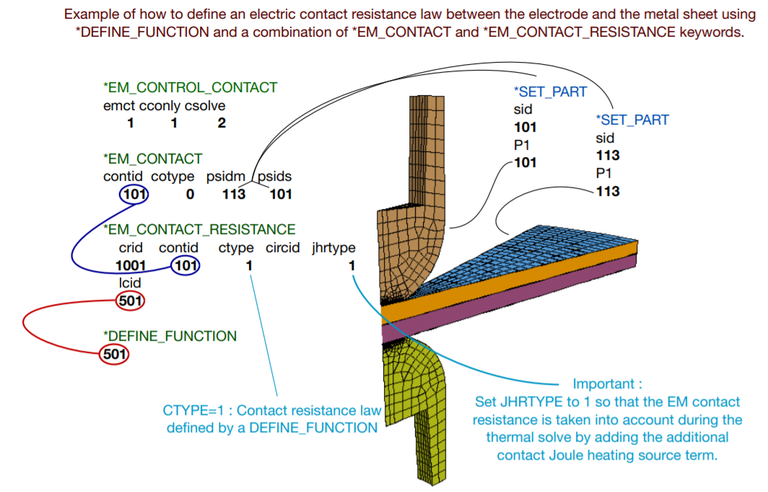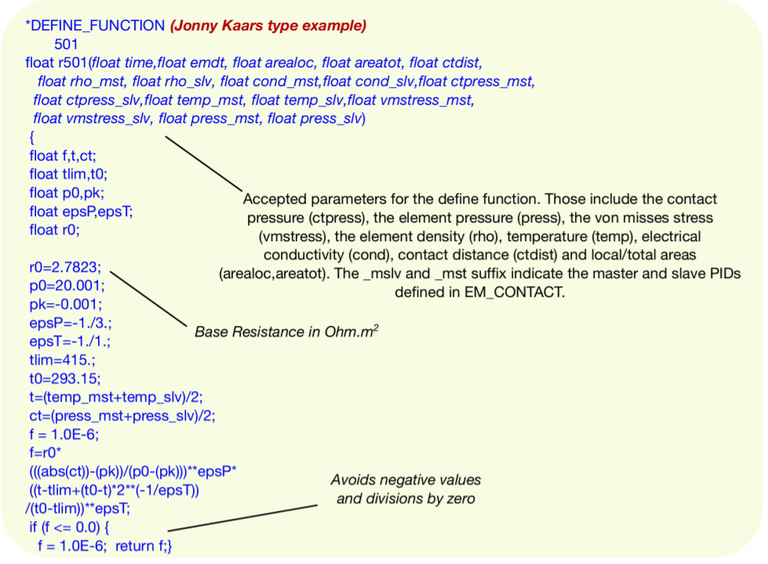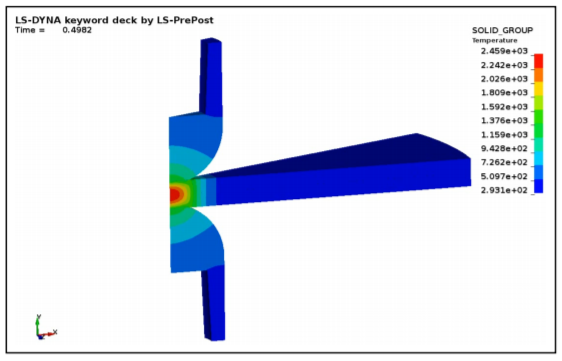Resistance spot welding is perhaps the most frequently encountered joining method for steel sheet in the automotive industry. It is accomplished by passing an electrical current through metal sheets via electrodes. The sheets are held together under the pressure exerted by the electrodes and heat is induced by the electrical current which generates a molten nugget between the sheets. The molten nugget then solidifies to form a bond. During the spot welding process, important changes occur in mechanical and metallurgical properties of the spot welded areas and heat affected zones appear. Although routinely used by the industry, the physics involved in the process are far from trivial, and generally involve a combination of electrical, mechanical, thermal, and metallurgical fields. In particular, the contact area between electrode and workpiece generates an additional electric contact resistance dependent on the models parameters. This contact resistance will have a decisive impact on the shape and size of the nugget and therefore the welds quality. In keeping with LS-DYNA's philosophy of offering flexible and robust tools, the approach adopted by the EM solver consists in using a DEFINE_FUNCTION to define this contact resistance allowing a precise model calibration when combining experimental and numerical results and thus enabling the engineer or researcher to get a clearer picture and better understanding of how the different physics are involved.
*EM_CONTACT
*EM_CONTACT_RESISTANCE
*EM_CONTROL
*EM_CONTROL_CONTACT
*EM_CONTROL_SWITCH
*EM_CONTROL_TIMESTEP
*EM_ISOPOTENTIAL
*EM_ISOPOTENTIAL_CONNECT
*EM_MAT_001
*EM_MAT_004
*EM_OUTPUT
*END
Numerically, setting up the RSW model consists of a challenging and highly non-linear problem where solid mechanics, thermal and EM quantities interact with each other. Two options are available to the user. Either the full 3D model can be set up (usually only a slice is used) or the 2D axisymmetric solver can be used for a faster solve. The following examples offer an example of a realistic configuration with reasonable material properties and realistic geometry and dimensions but which don't correspond to a specific case. The 2D examples include MORTAR contact for solid mechanics which is not yet supported in MPP.
3D axisymmetric case : 3Daxi
2D axisymmetric equivalent case : 2Daxi
And for the sake of input deck comparison, the following cases are also provided :
3D planar case : 3Dplanar
2D planar case : 2Dplanar




